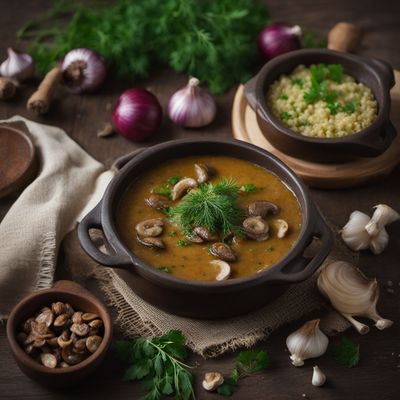
Dish
Kavut
To make kavut, cracked wheat is first toasted in a dry pan until it is golden brown. It is then cooked in water or milk until it is tender. The finished dish is typically sweetened with sugar or honey and flavored with cinnamon and nuts. Kavut is a great source of fiber and protein, making it a healthy breakfast option.
Origins and history
Kavut has been a staple in Turkish cuisine for centuries. It is often served during Ramadan as a filling meal to break the fast.
Dietary considerations
Kavut is naturally vegetarian and can be made vegan by using plant-based milk and sweeteners. It is also gluten-free.
Variations
Some variations of kavut include adding dried fruit, such as raisins or apricots, to the dish. It can also be flavored with rose water or orange blossom water for a fragrant twist.
Presentation and garnishing
Kavut is traditionally served in a bowl with a sprinkle of chopped nuts and a drizzle of honey or sugar on top. It can also be garnished with a few extra cracked wheat kernels for texture.
Tips & Tricks
Toasting the cracked wheat before cooking it adds a nutty flavor to the dish. Be sure to stir the wheat frequently while toasting to prevent burning.
Side-dishes
Kavut is typically served as a standalone dish for breakfast.
Drink pairings
Kavut pairs well with a cup of Turkish tea or coffee.
Delicious Kavut recipes
More dishes from this category... Browse all »

Acorn Mush
Native American cuisine

Ajdova kaša
Slovenian cuisine

Ajdovi žganci
Slovenian cuisine

Babor
North African cuisine

Banosh
Ukrainian cuisine

Bogobe jwa lerotse
African cuisine

Bohinjski žganci
Slovenian cuisine

Broodpap
Dutch cuisine
More cuisines from this region...

Assyrian cuisine
Savory, Tangy, Earthy, Herbaceous, Nutty

Caucasian cuisine
Spicy, Savory, Tangy, Herbaceous

Eastern Arabian cuisine
Spicy, Savory, Aromatic, Tangy, Sweet

Iranian cuisine
Savory, Spicy, Sweet, Tangy

Levantine cuisine
Fresh, Light, Healthy, Tangy, Savory

Pontic Greek cuisine
Bold, Hearty, Spicy, Tangy, Savory

